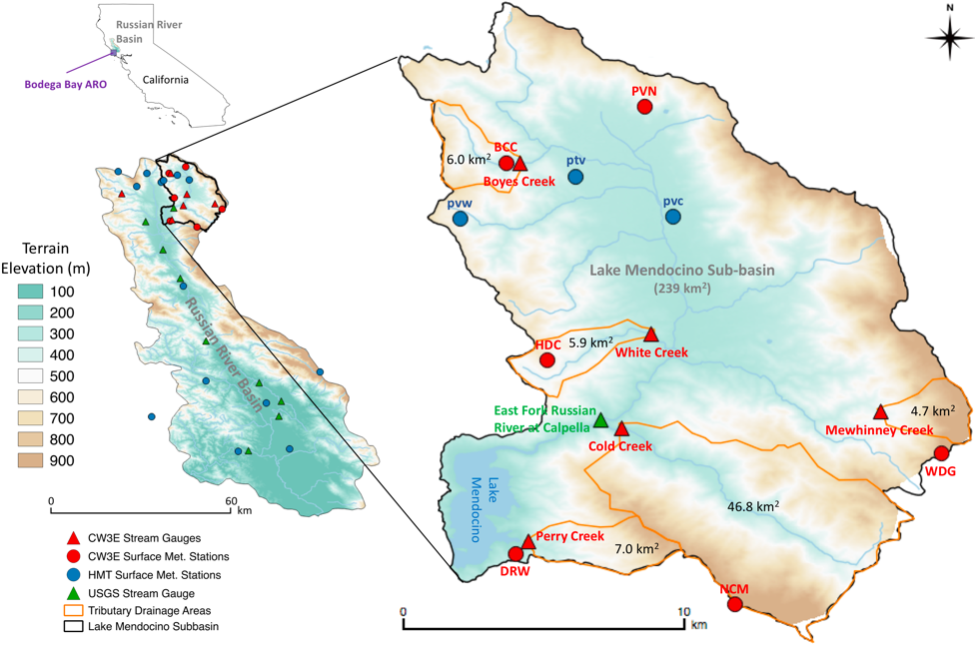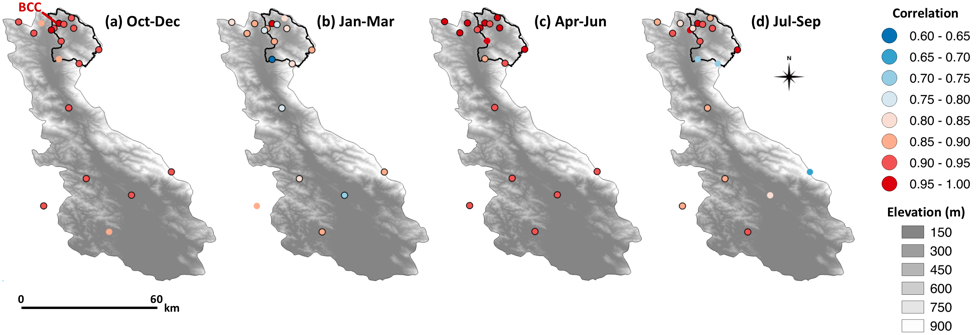CW3E Publication Notice
A soil moisture monitoring network to assess controls on runoff generation during atmospheric river events
December 22, 2020
CW3E hydrologist Edwin Sumargo, CW3E affiliate Hilary McMillan, CW3E mesoscale modeler Rachel Weihs, CW3E field researcher Carly Ellis, CW3E field research manager Anna Wilson, and CW3E Director F. Martin Ralph published a paper in the Hydrological Processes, titled “A soil moisture monitoring network to assess controls on runoff generation during atmospheric river events” (Sumargo et al. 2020). As part of CW3E’s 2019-2024 Strategic Plan to support Forecast Informed Reservoir Operations (FIRO), CW3E researches the impacts of atmospheric rivers (ARs) on water management and public safety in order to improve the prediction capability. This study highlights the role of soil moisture in runoff generation from precipitation during AR events and the value-added for hydrologic model design and calibration. Ultimately, this work supports ongoing collaborations involving CW3E, California Department of Water Resources, NOAA, Sonoma Water, and the U.S. Army Corps of Engineers to improve streamflow predictions and develop situational awareness tools for FIRO at Lake Mendocino.
Soil moisture is a key modifier of runoff generation from rainfall excess. This paper presents a new and publicly available dataset from a soil moisture monitoring network in Northern California’s Russian River Basin (Fig. 1), designed to assess soil moisture controls on runoff generation under AR conditions. The observations consist of 2‐minute volumetric soil moisture at 19 sites and 6 depths (5, 10, 15, 20, 50, and 100 cm). We present short analyses of these data to demonstrate their capability to characterize soil moisture responses to precipitation across sites and depths, including time series analysis, correlation analysis, and identification of soil saturation thresholds that induce runoff. Our results show strong inter‐site Pearson’s correlations at the seasonal timescale (Fig. 2). Correlations are strong (>0.8) during events with wet antecedent soil moisture and during drydown periods, and weak (<0.5) otherwise. High event runoff ratios are observed when certain antecedent soil moisture thresholds are exceeded, and when antecedent runoff is high. Our analyses also indicate three ways in which soil moisture data are valuable for model design: (1) with multi‐depth sensors, statistical tests can be used to identify which depths show differences in soil moisture dynamics and, therefore, should be used by modelers to define distinct model layers; (2) time series analysis indicates the role of soil moisture processes in controlling runoff ratio during precipitation, which hydrologic models should replicate; and (3) analysis of decreases in soil moisture spatial correlation helps identify which areas of the watershed would benefit from a distributed calibration of model parameters related to soil moisture.
Figure 1. Terrain base maps showing the locations of RHONET soil moisture observations (left), including the HMT and CW3E stations within the Lake Mendocino sub‐basin (right). Also shown is a California map with pointers on Russian River basin and Bodega Bay ARO site (top left inset). The CW3E and United States geological survey (USGS) stream gauges are also shown, which are parts of the RHONET in the greater Russian River basin as well as within the Lake Mendocino sub‐basin. Orange contours delineate areas that drain into five CW3E stream gauges.
Figure 2. Pearson’s correlation maps of 2‐min soil moisture VWCn with BCC site at 10‐cm depth for (a) autumn (Oct–Dec), (b) winter (Jan–mar), (c) spring (Apr–Jun), and (d) summer (Jul–Sep) of WYs 2018–2019. The thick black contours demarcate the Lake Mendocino sub‐basin. The sites where the correlations are statistically significant at 99% significance level are outlined in black.
Sumargo, E., McMillan, H., Weihs, R., Ellis, C. J., Wilson, A. M., and Ralph, F. M. (2020). A soil moisture monitoring network to assess controls on runoff generation during atmospheric river events. Hydrologic Processes, e13998, https://doi.org/10.1002/hyp.13998.


